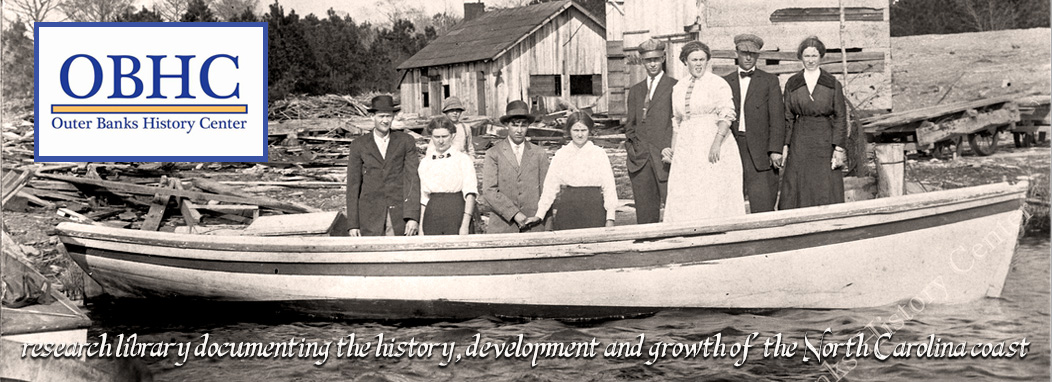Hello! For my blog post, I’ve decided to talk about events for the past week of the field site, as it was very busy and a lot of fun.
On Monday, I had my internship with Quible & Associates, PC. My mentor, Warren Eadus, had me scour the internet and the Outer Banks History Center here in Manteo for aerial photographs of the Oregon Inlet Fishing Center. Warren said he couldn’t tell me exactly why I was finding these photographs, so I’m assuming the project is above my pay grade. 
Tuesday was a normal class day, but Wednesday morning we left for Corolla and Corova to learn about the local history, ecology, and culture. We first went to the Outer Banks Center for Wildlife Education. We learned Corolla used to be one of the largest waterfowl hunting centers in the US, until over-exploitation lowered bird populations drastically. Now, this area has laws protecting waterfowl. Later in the day, we headed for Corova to see the wild horses, a major tourist attraction. We got up close and personal with the horses while Edna, our tour guide, told us about their group structures, called “harems”. Edna had quite a romantic, anthropomorphized view of the horses, but I understood what she meant when we were near them.
 On Thursday, we went kayaking with a former student, Hadley, of the Outer Banks Field Site, which in her day was the Albemarle Ecological Field Site (I think the name change was a good one). She told us about some of the marsh characteristics and history of the area, noting some of the problems it is facing with the invasive Phragmites and climate change. Later in the day we visited the Historic Jarvisburg Colored School on the mainland side of Currituck. It is one of the only restored schools for “colored” people in the area. Along the walls were personal anecdotes of going to school, the times, the food, and many other aspects of life in the not-so-distant past. It spoke to me of how recently black and white people were placed in “separate but equal” (the “equal” part being highly questionable) institutions.
On Thursday, we went kayaking with a former student, Hadley, of the Outer Banks Field Site, which in her day was the Albemarle Ecological Field Site (I think the name change was a good one). She told us about some of the marsh characteristics and history of the area, noting some of the problems it is facing with the invasive Phragmites and climate change. Later in the day we visited the Historic Jarvisburg Colored School on the mainland side of Currituck. It is one of the only restored schools for “colored” people in the area. Along the walls were personal anecdotes of going to school, the times, the food, and many other aspects of life in the not-so-distant past. It spoke to me of how recently black and white people were placed in “separate but equal” (the “equal” part being highly questionable) institutions.
After this, we had some appetizers and root beer at a local brewery in Currituck to discuss our field trip. Of note to me was our discussion of the wild horses, as they seem to be a controversial issue. Much of the attraction of visiting Corova is for the wild horses, with several companies that specialize in driving tourists to them. There seems to be a romanticism associated with them. However, we also discussed that they are an invasive species that do bother some of the locals (the horse tours themselves also seemed to bother the locals [we saw a sign in one person’s yard that said “horse tours invade my privacy”]) and can trample marshland. The horses are protected by the Corolla Wild Horses Protection Act and the Corolla Wild Horse fund. The issue is wrapped up in local history, economics, privacy, and fascination with horses.
Overall, this trip taught me about the importance of local history in how people make decisions, whether it be to conserve land once hunted, to protect a species that doesn’t ecologically belong, or to preserve a school for its rich and important history. However, our week was not done.
On Friday, we awoke early for a sunrise ecology lab about ghost crabs.
Ghost crabs are often used as an indicator species for beach health, so quantifying their numbers helps to understand natural and anthropogenic impacts on beaches. We compared two methods of counting ghost crab holes: one involved creating a transect of the beach, dividing it into zones, and counting the number of burrows 1 meter of each side the transect; the other method involved throwing an object with a fixed area (in this case a very scientific hula hoop) three times in each beach zone. We are to compare these methods for next week’s classes.
Thus concludes my blog post about the events of this week. Thanks for reading (if you made it this far)!









